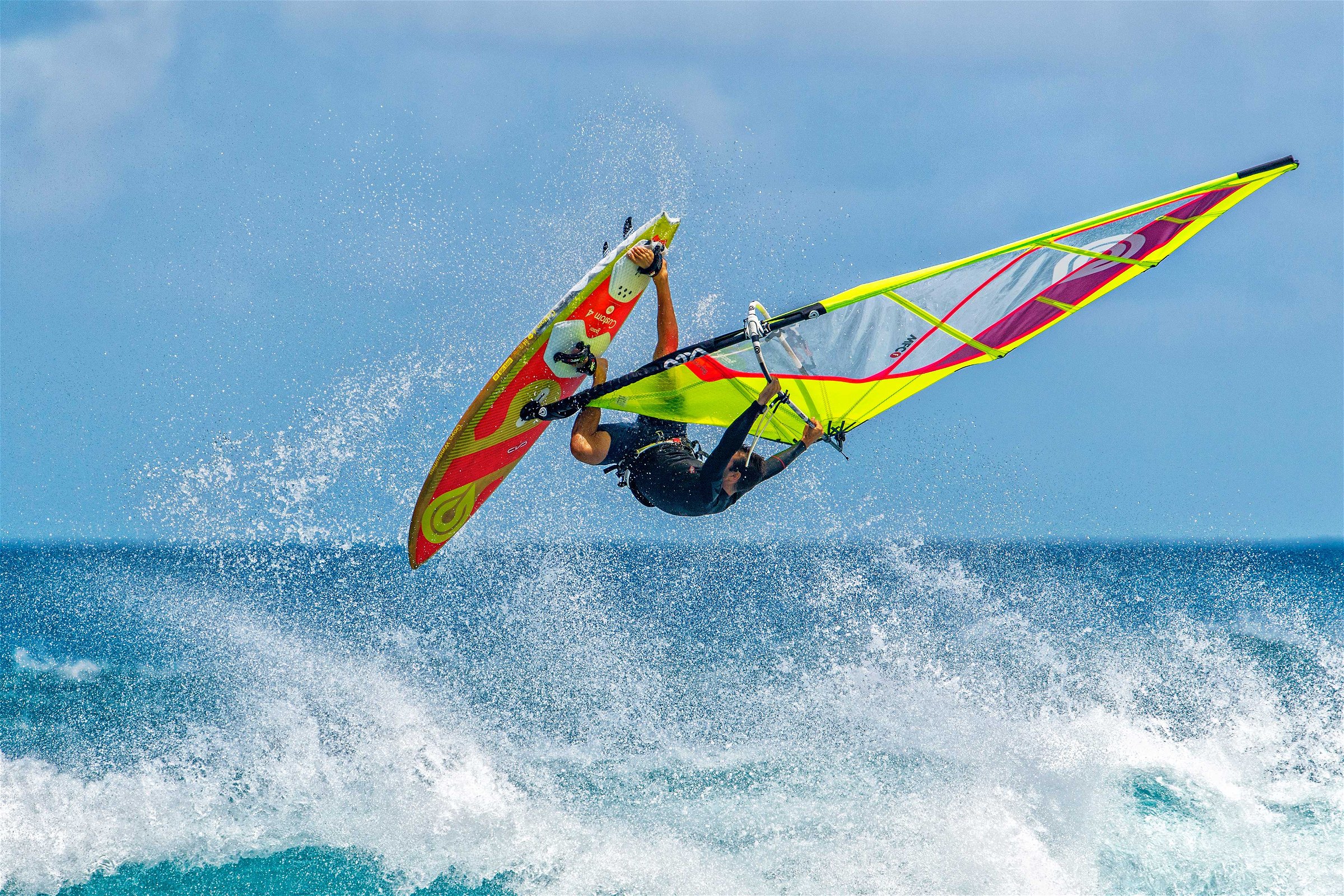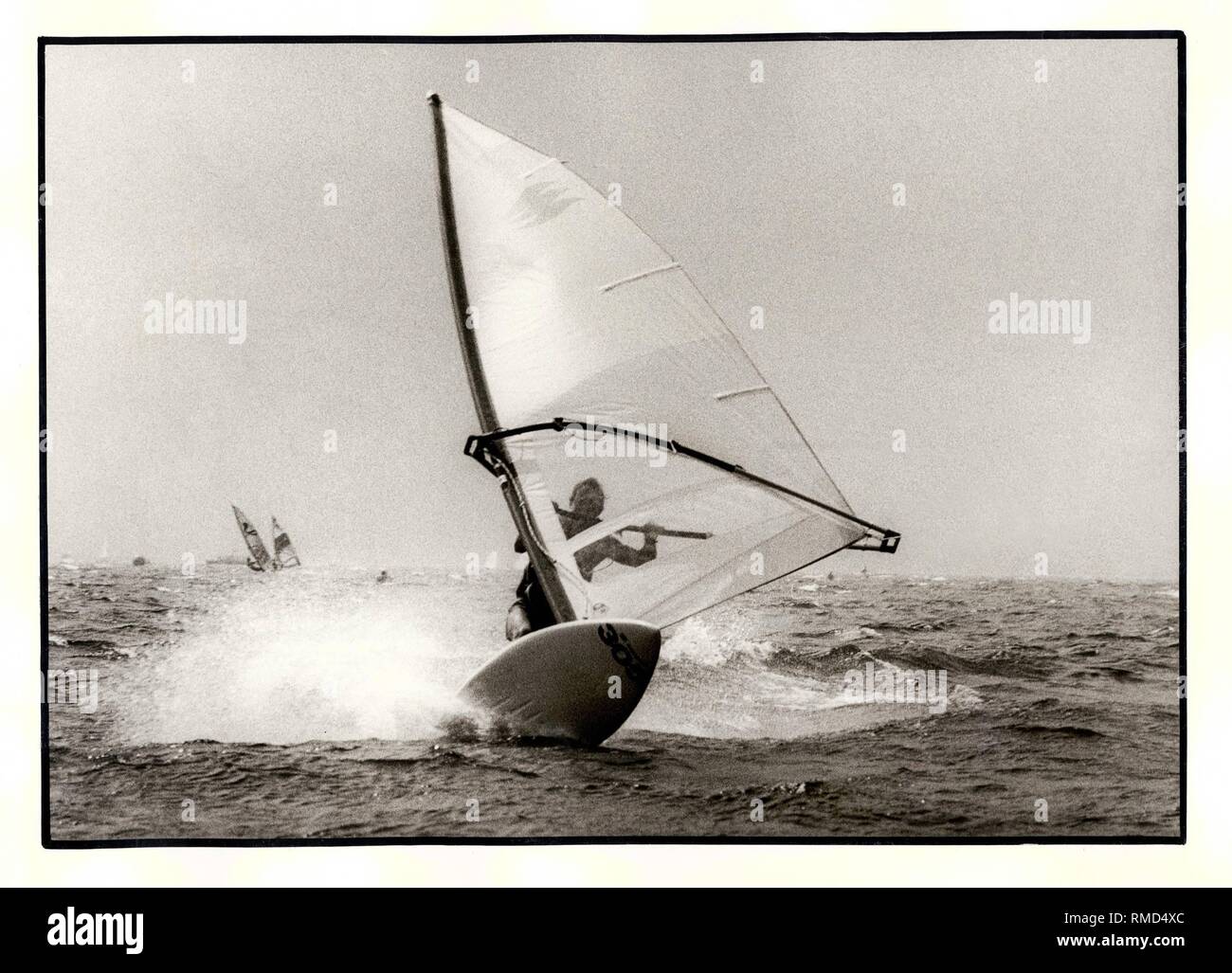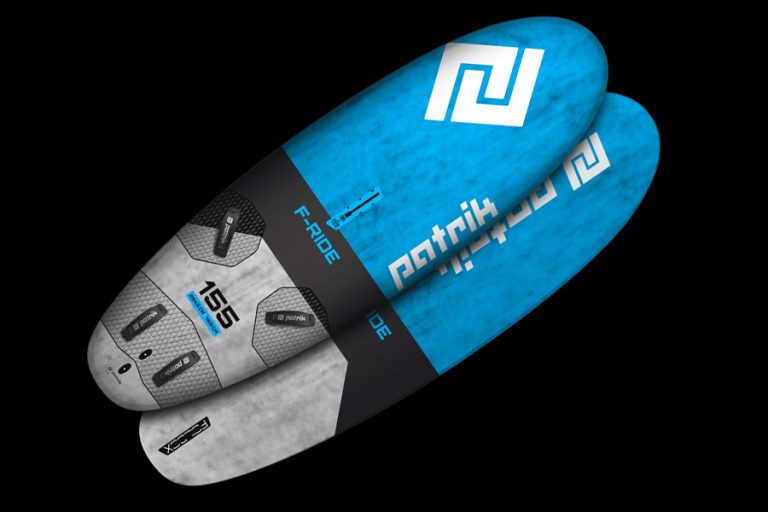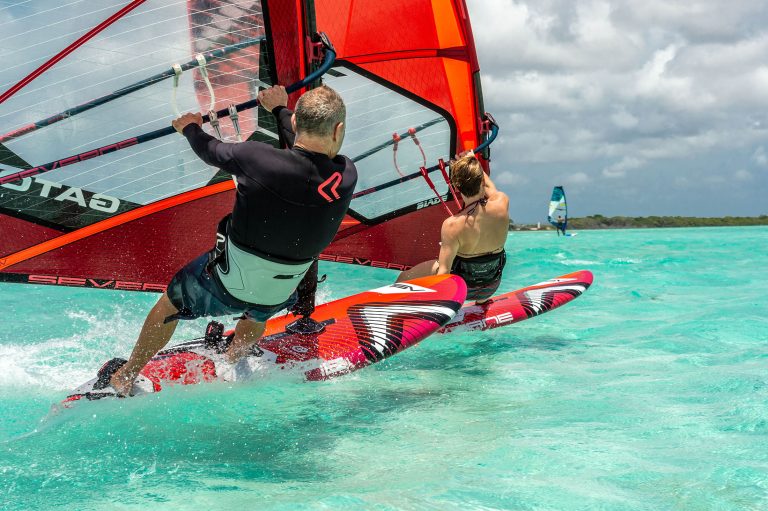How to Turn And Maneuver on a Windsurfing Board?
To turn and maneuver on a windsurfing board, use your feet to shift your weight and lean in the direction you want to go. Practice on calm waters before attempting in stronger winds or waves.
Windsurfing is a thrilling water sport that combines elements of sailing, surfing, and even a bit of kitesurfing. Once you master the basics of balancing and steering on a windsurf board, it’s time to learn how to turn and maneuver.
Proper turning and maneuvering on a windsurfing board requires a combination of weight shifting, footwork, and sail control. Whether you’re cruising downwind, tacking upwind, or carving through waves, using the right technique is key to staying in control and having fun on the water. With a bit of practice and patience, you can become a skilled windsurfer and enjoy the rush of sailing across the waves.

Credit: goyawindsurfing.com
Understanding The Board And Sail
To successfully turn and maneuver on a windsurfing board, it’s crucial to choose the right board and sail for your level of experience and the conditions. Understanding the anatomy of your board and sail is crucial. Proper positioning of your feet and body on the board is essential for optimal control and balance.
Using the power in the sail allows you to control your direction and speed. By choosing the right combination of board and sail, positioning yourself correctly, and utilizing the power in the sail, you can easily and gracefully navigate the water on your windsurfing board.
So get out there and practice your windsurfing skills to become a pro in no time!
Basic Turning Techniques
Windsurfing requires proper turning techniques to control the board’s direction successfully. Tacking is the most basic technique that involves turning the sail and board into the wind. Jibing, on the other hand, requires you to switch the sail to the opposite side of the board to turn downwind.
Carving, another efficient way to change direction while maintaining speed and control, involves shifting your weight to the opposite side of the board. Footwork plays an essential role in initiating turns and controlling speed. Body positioning also helps to pivot the board in the desired direction using your hips, shoulders, and line of sight.
Mastering these techniques is fundamental to successfully maneuvering and turning a windsurfing board.
Advanced Techniques For Maneuvering
To master advanced techniques for maneuvering on a windsurfing board, you’ll need to know how to jump, wave ride, freestyle and navigate high winds. When using jumping techniques, you’ll use the wind to launch yourself and the board into the air for aerial tricks.
In wave riding, you’ll navigate waves and swells at high speeds for an exciting ride. To add new dimensions of challenge and excitement to your ride, freestyle techniques involve adding new tricks and maneuvers. Finally, when incorporating high-wind techniques, keep in mind how to adjust your stance and sail control to handle strong gusts and choppy conditions.
With these different methods in mind, you’ll be able to take your windsurfing experience to new levels of adventure and excitement.
Common Mistakes To Avoid
Turning and maneuvering on a windsurfing board can be quite challenging for beginners. Common mistakes include oversteering or understeering the board and sail, poor footwork and weight distribution, incorrect sail control or rigging, ignoring wind and weather conditions, and neglecting proper safety procedures and equipment.
To avoid these mistakes, it’s important to take a windsurfing lesson from a certified instructor and practice regularly. Focus on maintaining a balanced stance and using your body weight to control the board. Keep in mind wind direction, speed, and gusts, as well as waves and currents.
Always wear appropriate gear, such as a wetsuit, helmet, and life jacket, and stay within your skill level. With practice and patience, you’ll eventually master the art of windsurfing.
Tips For Improving Your Windsurfing Skills
Improving your windsurfing skills requires consistent practice and endurance building. Seek feedback and instruction from experienced windsurfers to enhance your technique. Set achievable goals and track progress to stay motivated. Staying up-to-date with new gear and techniques can also help improve your performance.
Most importantly, enjoy the ride and remain open to new experiences and challenges. Practice, patience, and perseverance are key to becoming a successful windsurfer.
Frequently Asked Questions For How Do I Turn And Maneuver On A Windsurfing Board?
How Do I Turn On A Windsurfing Board?
To turn on a windsurfing board, move your back hand towards the tail and put a bit of pressure on the back foot to pivot the board.
How Do I Maneuver On A Windsurfing Board?
To maneuver on a windsurfing board, lift the back foot and move the front foot towards the tail to bring the board around.
What Happens If I Lose Balance On A Windsurfing Board?
If you lose balance on a windsurfing board, try to regain it by leaning towards the sail and applying pressure on the mast foot.
How Can I Improve My Windsurfing Skills?
To improve your windsurfing skills, practice regularly, take lessons from a qualified instructor, and learn from others.
What Is The Best Wind Speed For Windsurfing?
The best wind speed for windsurfing is between 15-25 knots. It offers the best combination of speed, power, and control.
How Do I Control My Speed On A Windsurfing Board?
To control your speed on a windsurfing board, adjust the sail angle, shift your weight forward or backward, and use foot pressure.
Can Anyone Learn Windsurfing, Or Is It Only For Experts?
Anyone can learn windsurfing. It is a beginner-friendly sport, and you can start with a simple setup and basic skills.
Conclusion
As you can see, windsurfing requires a lot of practice and patience. But once you master the basic concepts, the sense of accomplishment is well worth the effort. Remember, your body is the engine that powers the board, so it’s important to work on your balance and posture.
Try to feel the wind and the water, and let yourself go with the flow. And don’t forget to have fun! Windsurfing is a wonderful way to enjoy nature, stay fit, and challenge yourself. With proper training, you can become a confident and skilled windsurfer, able to turn and maneuver with ease.
Keep pushing yourself and trying new things, and soon you’ll be riding the waves like a pro. Happy windsurfing!




